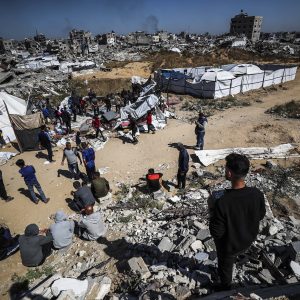Bangladesh’s rainwater harvesting Friendship Hospital wins international recognition
A remote hospital in Bangladesh’s southwestern Satkhira district has earned international recognition as the world’s best building and as a model infrastructure resilient to the impacts of climate change.
Located near the world’s largest mangrove forest (‘Sundarbans’) and the Bay of Bengal, the rainwater-harvesting health facility Friendship Hospital won the 2021 Royal Institute of British Architects (RIBA) International Prize.
In a declaration in January this year, RIBA applauded the “architecture of care both for humanity and for nature” of the hospital building in Satkhira’s Shyamnagar area, about 125 miles (201 kilometers) southwest of the capital Dhaka.
“The building responds innovatively to the challenging environmental conditions of the Bengal, a fragile and dynamic environment directly impacted, without protection, to rising sea levels,” said RIBA in a statement.
The designer of the hospital and noted architect Kashef Chowdhury said it was a huge challenge for them to develop such a climate-resilient hospital in a remote disaster-prone area with a very limited budget.
“Water is everywhere in this underprivileged area. But people have to buy water for drinking and other family needs due to the excessive salinity,” Chowdhury said, adding even water collected by the shallow tube-wells in the area is salty due to climate change impacts on the water both under and above the ground.
“People do not take baths in most of the ponds as those are the main sources of drinking water for the destitute locals, and the situation in the dry season turns worse,” Chowdhury noted. People in the area desperately try to preserve rainwater.
In the wake of the disastrous Sidr cyclone of 2007, they finally decided to develop a rainwater-harvesting hospital.”
After the global recognition, Friendship Hospital has turned into an attraction for tens of thousands of people in Bangladesh.
“It is a role model for the whole world that we have developed a very beautiful and environment-friendly hospital using all local materials and with a minimal budget of only $2 million,” Chowdhury said.
The hospital has also set an example for the maximum use of natural resources.
The hospital building has been designed in a way that interconnected courtyards and openings bring in natural light and air, and save power.
“We also save a huge amount of power as most of the hospital’s activities are conducted in the daytime with natural sunlight as it has been designed in a way that the whole day we get enough daylight and natural air. We also use air cooler machines only for some operation theatres and other laboratories,” he said.
The 80-bed hospital has been serving as a lifeline for thousands of needy people in the area, who are mostly farmers and fishermen.
People are pleased to receive modern treatment in a very natural environment with a cheap cost at the health facility.
“One can only enjoy the natural beauty here and take services,” he said.
Chowdhry said that they have a dream to develop more such health facilities in other vulnerable rural areas of Bangladesh as more than 70% of the population lives in villages.
According to government data, 42 million people in Bangladesh living in 19 coastal districts are under severe threat of climate change impacts, while a one-meter (3.2-foot) rise in the sea level could inundate one-fifth of the country in the near future.
Climate-resilient infrastructures like Friendship Hospital can play a pivotal role in that critical situation.












